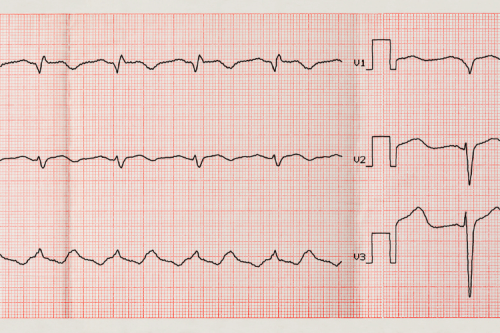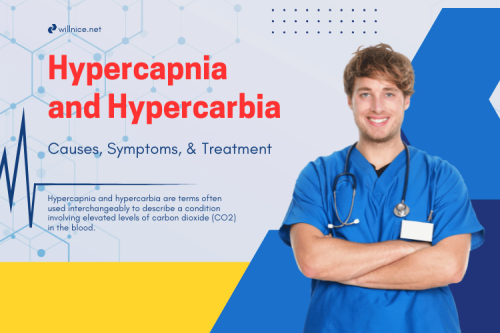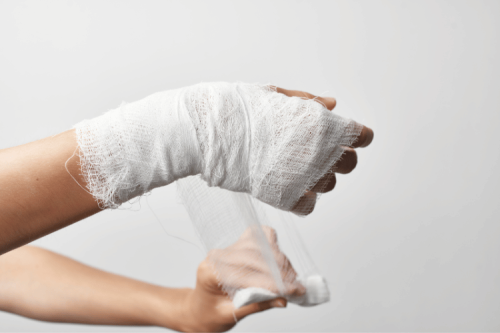
Choking on water might seem like a minor inconvenience, but in some cases, it can escalate into a serious medical emergency. Whether it’s a child laughing while drinking, an elderly person with swallowing difficulties, or someone simply gulping water too quickly, knowing how to respond can make all the difference. This guide provides a comprehensive overview of what choking on water entails, how to recognize the signs, and the immediate steps to take in emergencies. From tailored first aid techniques for children and adults to preventive strategies for avoiding choking altogether, this article equips you with the knowledge to act swiftly and effectively in high-pressure situations.
Understanding Choking on Water
What is choking on water?
Choking on water happens when liquid mistakenly enters the airway instead of the esophagus, disrupting normal breathing. This can occur if you swallow too quickly, laugh or talk while drinking, or have a medical condition like dysphagia (difficulty swallowing). For example, someone might choke while laughing during a sip of water at a social gathering.
It’s dangerous because it can block airflow, leading to oxygen deprivation. In severe cases, water entering the lungs may cause aspiration pneumonia, a condition where the lungs become inflamed or infected.

What are the signs of choking?
Recognizing the symptoms of choking on water is essential for quick and effective action. Key signs to watch for include:
- Coughing or gagging: This is the body’s natural reflex to clear the airway. For example, if someone starts coughing after a sip of water, encourage them to keep coughing to expel the liquid.
- Wheezing or high-pitched sounds: These sounds indicate a partial obstruction of the airway. If you hear this, monitor the person closely and prepare to intervene if their condition worsens.
- Difficulty breathing: Struggling to inhale or exhale properly is a serious sign. For instance, if someone appears to be gasping for air, act quickly to help clear their airway.
- Bluish skin or lips: This is a sign of oxygen deprivation and indicates a severe choking emergency. Immediate action, such as the Heimlich maneuver, is critical.
- Panic or distress: The person may appear visibly uncomfortable, unable to speak, or show signs of fear. Reassure them calmly while taking steps to assist.
For example, if a child suddenly starts coughing and gasping after drinking water, have them lean forward and encourage them to cough forcefully. If their symptoms persist or worsen—such as difficulty breathing or turning blue—be ready to perform first aid or call for emergency medical help.
By identifying these symptoms early and responding appropriately, you can prevent complications and ensure the person’s safety.
Immediate Steps to Take When Someone Is Choking on Water
When someone is choking on water, acting quickly and calmly is essential. Follow these steps to help them:
1. Encourage Coughing
If the person can still breathe or make sounds, encourage them to cough forcefully. Coughing generates pressure in the lungs, which can help expel the water and clear the airway.
- Why it works: Coughing is the body’s natural reflex to clear obstructions and can sometimes be more effective than the Heimlich maneuver.
- Example: If someone accidentally swallows water while laughing, calmly tell them, “Keep coughing—it will help clear your throat.”
2. Positioning
If the person is struggling to breathe, have them lean slightly forward. This position uses gravity to help expel the water more easily.
- Why it works: Leaning forward prevents water from moving deeper into the airway and makes coughing more effective.
- Example: If a child inhales water while playing at the pool, gently guide them to bend forward and encourage them to cough.
3. Back Blows
If coughing and positioning don’t work, deliver five firm back blows to help dislodge the water.
- How to do it:
- Stand behind the person and lean them slightly forward.
- Use the heel of your hand to deliver quick, strong strikes between their shoulder blades.
- Why it works: Back blows create vibrations in the airway, which can help dislodge the water without causing further distress.
4. Abdominal Thrusts (Heimlich Maneuver)
If back blows don’t help and the person is unable to breathe or speak, perform abdominal thrusts.
- How to do it:
- Stand behind the person and wrap your arms around their waist.
- Make a fist with one hand and place it just above their navel.
- Grasp your fist with your other hand and perform quick, upward thrusts.
- Why it works: The thrusts create pressure in the abdomen, forcing trapped water out of the airway.
- Example: If a friend starts choking at a party, use this technique to help them breathe again.
5. Call for Help and Perform CPR if Necessary
If the person becomes unconscious, call emergency services immediately and begin CPR.
- How to do it:
- Lay the person flat on their back on a firm surface.
- Perform chest compressions at a rate of 100–120 per minute, pushing hard and fast in the center of the chest.
- If trained, give two rescue breaths after every 30 compressions.
- Why it works: CPR keeps oxygen flowing to the brain and vital organs until professional help arrives.
By following these steps, you can act quickly and effectively to help someone choking on water, minimizing the risk of complications.
How to perform the Heimlich maneuver for liquid choking
- Position yourself: Stand behind the person and wrap your arms around their waist. If they’re seated, kneel behind them to maintain proper leverage.
- Make a fist: Place your fist just above their navel, with the thumb side facing inward.
- Apply upward thrusts: Grasp your fist with your other hand and perform quick, upward abdominal thrusts. Repeat until the airway is cleared or the person starts breathing normally.
- For self-application: If you’re choking and alone, press your abdomen against a firm surface like the back of a chair or countertop to mimic the thrusts. For instance, if you’re in a kitchen, use the edge of a counter to apply pressure.
When to call for emergency medical assistance
- No improvement: If the person remains unable to breathe or speak after multiple attempts to clear the airway, call emergency services immediately.
- Loss of consciousness: If the person becomes unconscious, begin CPR if you’re trained, and ensure help is on the way.
- Persistent symptoms: Even if the choking subsides, seek medical attention to ensure no water has entered the lungs, which could lead to complications like aspiration pneumonia.
Common mistakes to avoid
- Slapping the back while upright: This can push water deeper into the airway. Always have the person lean forward before delivering back blows.
- Delaying action: Hesitating to intervene can worsen the situation. Act quickly but calmly.
- Using excessive force: When performing the Heimlich maneuver, adjust the pressure based on the person’s size and age to avoid injury.
By tailoring your response to the situation and acting swiftly, you can significantly improve the chances of a positive outcome.
What To Do When a Child Chokes on Water
When a child chokes on water, it’s essential to act quickly and adjust your approach to suit their smaller size and heightened anxiety. Follow these steps to respond effectively:
1. Stay Calm and Reassure the Child
- Why it matters: Children are highly sensitive to fear, and your calm demeanor can help ease their panic.
- What to do: Speak in a soothing tone and use simple, reassuring words like, “You’re okay, I’m here to help.” Avoid showing visible panic, as this can make the child more distressed and worsen their breathing difficulty.
2. Encourage Coughing
- Why it works: Coughing is the body’s natural reflex to clear the airway and is often the most effective way to expel water.
- What to do: If the child can still breathe or make sounds, encourage them to cough forcefully.
- Example: Say, “Keep coughing—it will help clear your throat.”
3. Administer Back Blows
- Why it works: Back blows create pressure in the airway, helping to dislodge trapped water.
- What to do:
- Stand or kneel behind the child and lean them slightly forward.
- Use the heel of your hand to deliver five firm back blows between their shoulder blades.
- Monitor their response after each blow to see if the airway clears.
- Tip: Avoid slapping their back if they are upright, as this could push water deeper into the airway.
4. Take Immediate Action if Choking Persists
-
For infants (under 1 year old):
- Lay the baby face down along your forearm, supporting their head and neck. Ensure their head is lower than their chest.
- Deliver five back blows between the shoulder blades.
- If back blows don’t work, turn the baby face up and use two fingers to perform five gentle chest thrusts just below the nipple line. Repeat as needed.
-
For young children (1 year and older):
- Perform abdominal thrusts (Heimlich maneuver):
- Kneel to their level and wrap your arms around their waist.
- Make a fist with one hand and place it just above their navel.
- Grasp your fist with your other hand and perform quick, upward thrusts.
- Use less force than you would for an adult to avoid injury.
- Perform abdominal thrusts (Heimlich maneuver):
5. Seek Medical Attention
- When to call for help:
- If the child cannot breathe, loses consciousness, or shows no improvement after first aid.
- If the child becomes unconscious, begin CPR immediately if you are trained, and ensure emergency services are on the way.
- Follow-up care: Even if the choking resolves, consult a doctor to rule out complications like aspiration pneumonia. Watch for symptoms such as persistent coughing, wheezing, or fever.
Adjusting first aid techniques for infants and young children
For infants (under 1 year):
- Position the baby: Lay the infant face down along your forearm, supporting their head and neck with your hand. Ensure their head is lower than their chest.
- Back blows: Use the heel of your hand to deliver five firm back blows between the shoulder blades. For instance, if a baby chokes while drinking from a bottle, this technique can help dislodge the liquid.
- Chest thrusts: If back blows don’t work, turn the infant face up. Use two fingers to perform five gentle chest thrusts just below the nipple line. Repeat the cycle as needed until the airway is clear or help arrives.
For young children (1 year and older):
- Abdominal thrusts: Kneel to their level and perform the Heimlich maneuver. Place your fist just above their navel, grasp it with your other hand, and apply quick, upward thrusts.
- Adapt pressure: Use less force than you would for an adult to avoid causing injury. For example, if a toddler chokes while drinking from a sippy cup, gentle but firm thrusts are effective.
When to seek help
- Call emergency services: If the child cannot breathe, loses consciousness, or shows no improvement after first aid, call for help immediately.
- Consult a doctor: Even if the choking resolves, it’s important to have the child checked by a healthcare provider to rule out complications like water entering the lungs.
Common mistakes to avoid
- Shaking the child: This can worsen the situation and cause additional distress.
- Using excessive force: Be mindful of the child’s size and age when applying back blows or thrusts.
- Delaying action: Hesitating to intervene can escalate the situation. Act quickly but calmly.
By tailoring your response to the child’s size, age, and needs, you can provide effective and safe assistance in choking emergencies.
How to Avoid Choking While Drinking Water in the First Place
Practical tips for safe drinking habits
- Drink slowly: Take small sips instead of gulping large amounts of water at once. For example, after exercising, avoid chugging water too quickly, as this can increase the risk of choking.
- Avoid distractions: Focus on drinking without talking, laughing, or multitasking. For instance, a child drinking water while running around or playing is more likely to choke. Encourage them to sit down and drink calmly.
- Maintain proper posture: Sit upright while drinking to ensure water flows smoothly down the esophagus. Avoid reclining or lying down immediately after drinking, as this can increase the chance of water entering the airway.
Recognizing and addressing swallowing difficulties
- Identify the signs: Frequent coughing, throat clearing, or a sensation of water “going down the wrong pipe” may indicate swallowing issues. For example, an elderly person who coughs after every sip might be experiencing early signs of dysphagia.
- Consult a specialist: If swallowing difficulties persist, seek advice from a speech therapist or medical professional. They can provide tailored strategies, such as exercises to strengthen swallowing muscles.
- Modify water intake: Use a straw or thickened liquids if recommended by a healthcare provider. For instance, individuals recovering from a stroke may benefit from thickened water to reduce the risk of choking.
Preventive measures for children, the elderly, and individuals with medical conditions
For children:
- Teach safe habits: Explain the importance of drinking slowly and sitting still while drinking. For example, remind children not to drink while running or playing with friends.
- Supervise during meals: Keep an eye on young children to ensure they’re drinking safely, especially when using sippy cups or water bottles.
For the elderly:
- Encourage small, controlled sips: Provide reminders to take their time while drinking. For instance, offer water in smaller cups to prevent gulping.
- Use adaptive tools: Consider supportive seating and specialized cups, such as those with spill-proof lids or angled spouts, to make drinking easier and safer.
For individuals with medical conditions:
- Follow tailored advice: For conditions like Parkinson’s disease or stroke recovery, follow specific recommendations from healthcare providers. For example, they may suggest the chin-tuck swallowing technique, where the person tucks their chin toward their chest while swallowing to reduce choking risks.
- Use assistive devices: Tools like weighted utensils or non-slip cup holders can help individuals with limited mobility drink more safely.
Common mistakes to avoid
- Drinking too quickly: This is especially risky after physical activity or when feeling very thirsty. Encourage pacing to prevent choking.
- Ignoring early signs of swallowing issues: Persistent coughing or throat clearing should not be dismissed, as they may indicate a more serious problem.
- Allowing distractions: Drinking while walking, talking, or laughing increases the risk of choking, particularly for children.
By adopting these preventive strategies and tailoring them to specific needs, you can significantly reduce the chances of choking while drinking water.

Acting on Emergencies of Water Choking
How to stay calm and act quickly in high-pressure situations
- Assess the situation: Quickly determine if the person is coughing or unable to breathe. For example, if someone starts choking while drinking water at a restaurant, check if they can cough or make sounds. If they can, encourage them to cough forcefully to clear the airway.
- Stay composed: Panic can escalate the situation. Take a deep breath and focus on the steps needed to help. Speak calmly to reassure the person choking, saying something like, “You’re okay, I’m here to help.”
- Take immediate action: If the airway is blocked and the person cannot cough, perform the Heimlich maneuver or back blows, depending on their age and size. For instance, if a child is choking, kneel to their level and use gentle but firm abdominal thrusts.
- Call for help if needed: If the choking persists or the person becomes unconscious, contact emergency services immediately. While waiting for help, continue first aid efforts like CPR if you’re trained.
Preparing for potential complications like water aspiration
- Understand water aspiration: This occurs when water enters the lungs, potentially leading to inflammation or infection, such as aspiration pneumonia. For example, someone who chokes while swimming might accidentally inhale water into their lungs.
- Monitor for symptoms: After choking, watch for signs like persistent coughing, wheezing, chest discomfort, or fever. These symptoms may not appear immediately but could develop hours later.
- Seek medical attention: If symptoms of aspiration appear, consult a healthcare provider promptly. For instance, if a person continues to cough or feels short of breath after choking, they should be evaluated to prevent further complications.
- Learn first aid: Equip yourself with basic first aid training to handle choking emergencies effectively. For example, taking a CPR or first aid course can prepare you to act confidently in high-pressure situations.
Common mistakes to avoid
- Slapping the back while upright: This can push water deeper into the airway. Always have the person lean forward before delivering back blows.
- Delaying action: Hesitating to intervene can worsen the situation. Act quickly but calmly.
- Ignoring symptoms after choking: Even if the person seems fine, persistent coughing or discomfort should not be dismissed, as it could indicate water aspiration.
By staying calm, acting swiftly, and being prepared, you can respond effectively to water choking emergencies and minimize potential risks.
Frequently Asked Questions
Q: What should I do when choking on saliva?
A: Cough forcefully to clear the airway and take slow, deep breaths to regain control. If breathing becomes difficult or the airway remains blocked, perform the Heimlich maneuver or call emergency services immediately.
Q: Can choking on water give you pneumonia?
A: Yes, choking on water can lead to aspiration pneumonia if water enters the lungs instead of the stomach. Watch for symptoms like persistent coughing, wheezing, fever, or difficulty breathing, and seek medical attention if these occur.
Q: What happens if water gets in your lungs while drinking?
A: Small amounts of water in the lungs usually trigger coughing to clear the airway. However, larger amounts can irritate the lungs or cause aspiration pneumonia. If breathing issues persist or worsen, seek medical help promptly.
Q: What happens during a choking episode in water?
A: During a choking episode in water, liquid enters the airway instead of the esophagus, causing an obstruction. This can lead to difficulty breathing, coughing, or even loss of consciousness if the airway isn’t cleared quickly.
Q: How can I help someone who is choking on water?
A: Stay calm and assess the situation. Encourage the person to cough forcefully to expel the water. If they can’t breathe or speak, perform abdominal thrusts or back blows between the shoulder blades to clear the obstruction.
Q: What are the risks associated with choking on water?
A: Choking on water can lead to aspiration pneumonia if water enters the lungs. The sensation of choking can also cause anxiety, making it harder for the person to stay calm. Severe cases may require emergency intervention to restore normal breathing.
Q: What should I do if water enters the lungs?
A: If water enters the lungs, monitor for symptoms like persistent coughing, wheezing, or difficulty breathing. Seek medical attention immediately if these symptoms appear, as they could indicate complications like aspiration pneumonia.
Q: How can I clear the airway of someone who has inhaled water?
A: Encourage the person to cough forcefully to expel the water. If they can’t breathe, perform back blows and abdominal thrusts. If the obstruction doesn’t clear, call emergency services and prepare to start CPR if necessary.
Q: Can choking on water lead to complications?
A: Yes, choking on water can cause complications like aspiration pneumonia or severe choking, where the person may lose consciousness. Acting quickly to clear the airway and restore breathing is essential to prevent further issues.
Q: What are the signs of severe choking?
A: Severe choking signs include inability to speak, difficulty breathing, bluish skin or lips, and loss of consciousness. If you notice these symptoms, call emergency services immediately and perform first aid to clear the airway.
Q: How can water safety practices prevent choking incidents?
A: Water safety practices can significantly reduce choking risks. Supervise children while they drink or swim, teach proper swallowing techniques, and ensure individuals are aware of the risks of inhaling water during activities like swimming or drinking.
Conclusion
Choking on water is often harmless, but it can become life-threatening if the airway is completely blocked or water enters the lungs. By recognizing the signs of choking, staying calm, and applying the appropriate first aid techniques, you can prevent complications and potentially save a life. Whether it’s encouraging someone to cough, performing the Heimlich maneuver, or seeking medical attention for symptoms of aspiration, quick and informed action is key. Additionally, adopting safe drinking habits and addressing underlying swallowing issues can help reduce the risk of choking incidents. With the right preparation and awareness, you can ensure that a simple sip of water doesn’t turn into a medical emergency.








 Login with Google
Login with Google Login with Facebook
Login with Facebook